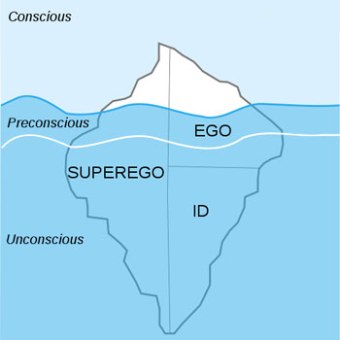The psychodynamic effect approach explains abnormal behaviour through three different sections in which each determine the behaviour and views of a person, these being the id, ego and superego. The conflict between the id and super ego can lead to anxiety; however the ego protects itself against anxiety using defence.
The id is the demanding and “selfish” part. It acts as the primitive part of the personality and is more demanding and is present straight from birth. The id acts according to the “pleasure principle” this involves it seeking to avoid pain and unpleasant increases.
The ego acts according to the reality principle. It is the conscious rational part of the personality. It is usually developed by the time the infant is one year old. Freud believes that as the ego “attempts to mediate between id and reality”.
The superego is made up of two parts; the ego ideal and the conscience. The conscience can discipline the ego by causing feelings for guilt. For example if the ego allows the id to perform a certain task and gives in to its demand, the superego may make the person feel bad by making them feel guilty.
The id, ego and superego belong in different sections of the psyche; this goes through three parts the conscious, preconscious and unconscious.
To stop a person’s behavior stop from getting out of control we use defense mechanisms. These mechanisms help to control conflict which may lead to things like anxiety and depression. The types of defense mechanisms are; displacement, projection, reaction formation, regression, sublimation, rationalization, suppression. For example; suppression is when a person has a negative thought which a person tries to hide, so it looks different to other people. Another example of a defense mechanism is reaction formation. Reaction formation is the tendency of a repressed wish or feeling to be expressed at a conscious level in a contrasting form.
The id, ego and superego is a basic way of explaining abnormal behavior, defense mechanisms also determines the way a person behaves and how their feelings are shown.

